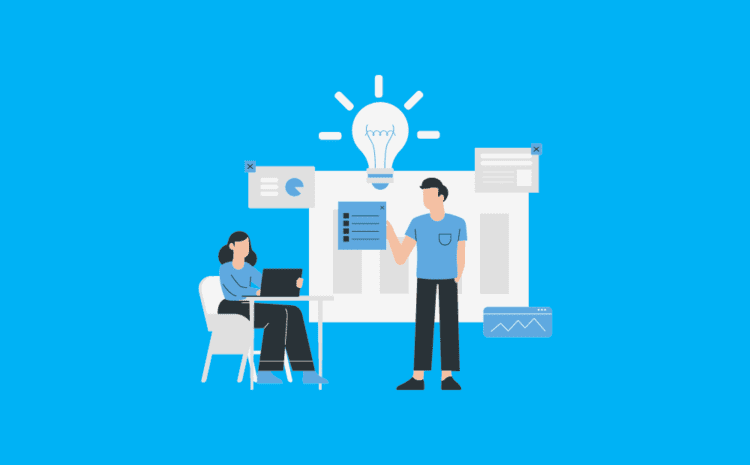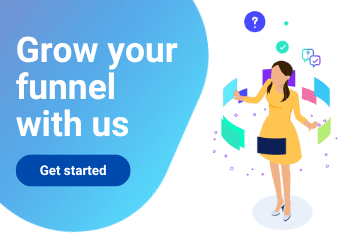How to Drive Conversions With Digital Marketing
The end goal of an effective digital marketing plan is to increase conversions. There is no disputing that. Digital marketing is an investment you make as a business owner to get a return and to have conversions become qualified leads, which subsequently turn into customers. Ultimately, these customers need to become repeat buyers and refer others.
The process of moving prospects through the sales funnel involves using various digital marketing tools, tactics, and strategies. In this article we’ll take a look at different types of digital marketing conversions, various tactics to achieve conversions, and some proven strategies to consider.
According to Forbes, if you’re a B2B, a whopping 94% of your buyers start their journey online.
Digital marketing conversions: what are they?
Subscribing to emails.
Email marketing remains one of the most effective ways to deliver results, especially when it’s tailored to the needs of your audience. Ask readers what interests them and then segment your subscribers to send them the most relevant content.
Filling out a contact form.
When a visitor to your website fills out a contact form that is considered a digital marketing conversion. They have opted in to receive further information from your business. Don’t make your prospects jump through hoops to receive what you’re offering. Keep your contact forms simple.
Visiting specific pages on your website.
A fundamental principle of digital marketing is understanding your customer journey and designing your website accordingly. After establishing your website’s goals and mapping out the flow, you can determine your digital marketing conversion based on specific page views.
Requesting a demo or starting a free trial.
These are tried-and-true methods of engaging prospective customers and converting them into paying customers. Demos can help you uncover the needs and goals of your prospects and determine their level of interest. A free trial can easily move a potential buyer into making a purchase.
Renewing a subscription.
The focus of a subscription-based business model is on customer retention and involves selling a product or service for recurring monthly or annual revenue. The renewal of a subscription is therefore one of the most important digital marketing conversions.
Making an initial and/or a repeat purchase.
These are the most sought-after types of digital marketing conversions. Depending on your type of business (B2C VS B2B), converting a digital marketing lead into a customer may take longer and require more steps.
Digital marketing conversions: what are some tactics?
Now that you understand some of the types of digital marketing conversions, you might be wondering how to achieve them. As a digital marketing agency, here are some tactics we use.
Lead generation.
Effective lead generation is about creating and building interest in a product or service to help develop a sales pipeline and nurture prospective customers until the time is right for them to make a purchase decision. The goal is to show them how you can provide a tailored solution to their problems and needs.
Landing page optimization.
As part of digital marketing conversion, optimizing your landing page to encourage people to become leads is important. Providing something of value in exchange for their contact information is one of the best ways to get their attention. Streamline your funnel and drive more conversions by testing and tweaking every page of your website, not just your landing pages.
Email marketing.
The power of email marketing lies in nurturing leads you’ve captured through your landing pages. Your email campaigns should be aimed at showing your prospects how you can be of benefit to them.
Reducing cart abandonment.
E-commerce businesses rely on online purchases to grow their business. Reducing cart abandonment is a tactic used when customers have filled their carts but have not made a purchase to convince them to return and complete the transaction. A variety of methods are generally used to accomplish this such as pop-up prompts, discounts, and reminders in emails.
Loyalty and referral programs.
With these programs, you can incentivize existing customers to make repeat purchases by rewarding them with tempting rewards, or you can encourage them to refer their friends to your business. Referral programs are especially effective to generate new, high quality leads.
Digital marketing conversion strategies
Having an array of strategies for digital marketing conversions will help your business achieve an ROI and be agile to make changes to any that are not delivering results.
Here is a sampling of strategies we recommend to our clients.
Call-to-Actions (CTA’s).
Effective call-to-actions on your website, email campaigns, social media content, paid advertising campaigns, etc are some of the most critical digital marketing conversion strategies. Make sure they hit the mark by being compelling, eye-catching, and easy to follow.
Pop ups.
Pop ups are a way to capture a visitor’s attention when they land on your website or are about to exit. They can offer tempting deals, discounts and special offers. In terms of engagement with popups, studies show that those that contain more context, or have a more playful message for the call to action, will get better engagement. (Source: Privy)
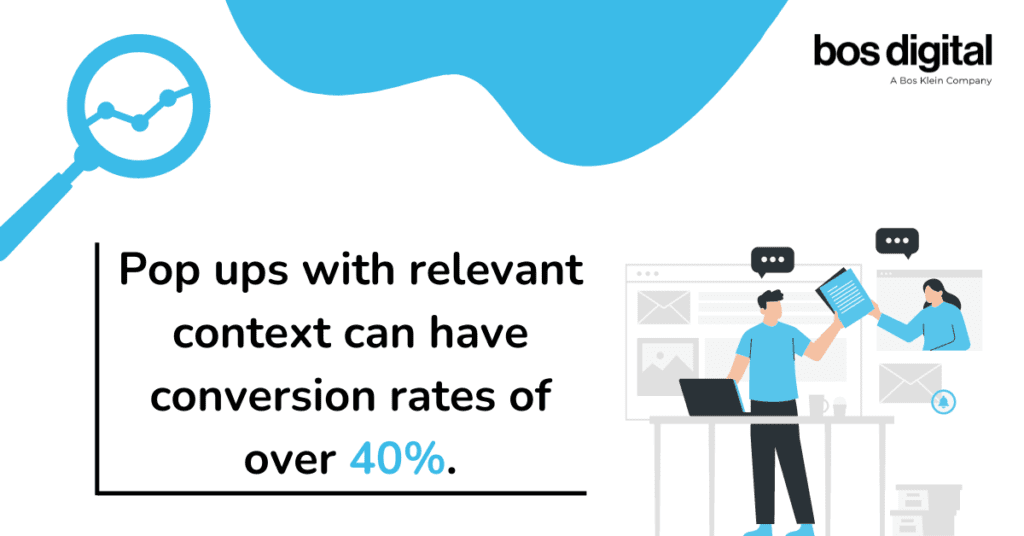
Authoritative content.
One of the best ways to build trust and authority with your audience is by creating original content. By driving traffic and engagement from an audience who is really interested in your expertise, knowledge, and services, it can help you generate digital marketing conversions.
Social media strategy.
Using social media to increase your digital marketing conversions can be accomplished with a few different strategies. Engaging your audience on social media can result in conversions. It also increases the ranking of your social media content. Posting content to Facebook groups and communities can help expand your organic reach whereas paid social advertising gives you the control to target your audience, whether that is super local or nationwide. Social media advertising is also implementing AI for even better results.
Video content.
Video can build trust and authority, just like other forms of digital content. Interactive, educational, and experience-based video content provides viewers with a sense of engagement. Using video as a marketing tool will allow you to increase awareness, consideration, and conversions.
Did you know that 66% of users prefer watching videos as a way of learning about a product or a service – making it at least four times more popular than articles and infographics?
According to SocialMedia Today Video marketers get 66% of their leads via video and in 2019, video marketing became a $135 billion industry in the US.
Optimize your website’s performance.
The expectation for digital marketing conversions on a website that loads slowly is unlikely to be met. Search engine algorithms penalize websites with slow loading speeds by placing them lower in search results. Additionally, 47% of website visitors expect pages to load in 2 seconds or less and will leave the website if it doesn’t load within 3 seconds!
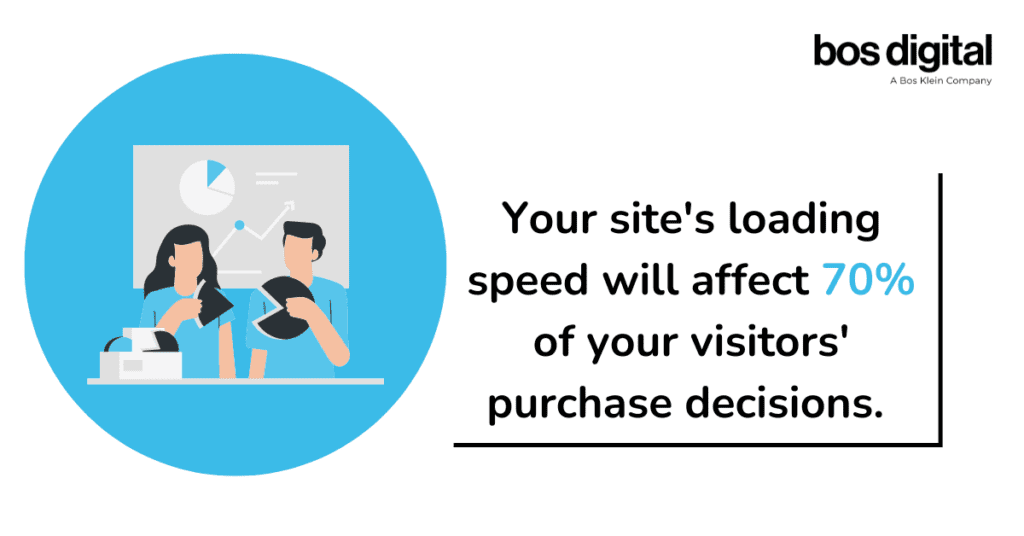
In conclusion, digital marketing conversions cannot be left to chance. Businesses today have access to a variety of tools, tactics, and strategies that can help them find creative, agile, and effective solutions.
At BOS Digital, we love the challenge of digital marketing. Let’s talk about your goals and create a custom strategy to help you grow your business now and in the future.
BOS Digital is a digital marketing agency in Raleigh. Our team of subject matter experts understand the complexities of lead generation, digital marketing, communications, and goal-driven marketing.

